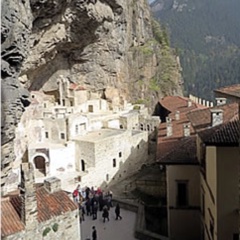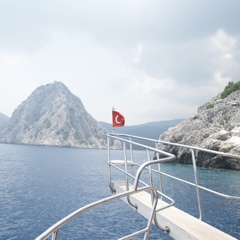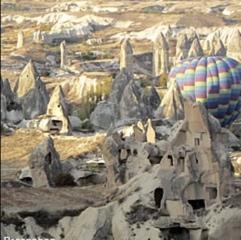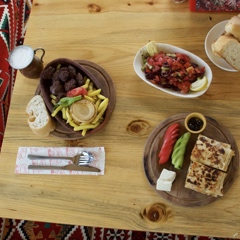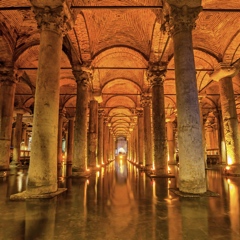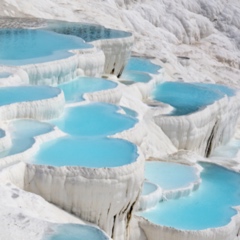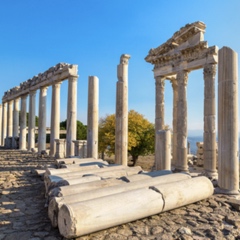At the very heart of Konya, in more ways than one, is the Mevlâna Müzesi (Mevlana Museum), the former tekke (dervish hall) that now holds the tomb of Mevlâna Jelaleddin Rumî, founder of the Mevlevi order of dervishes, commonly called the Whirling Dervishes.
The Mevlâna Müzesi is a place of pilgrimage for Muslims because Rumî is a saint. His poetic message of peace, love of God and one’s fellow creatures, resounds to a far wider audience today than it did over 700 years ago when Rumî preached and taught in Konya, and whirled in ecstasy through its streets. Muslim and non-Muslim pilgrims come from throughout the world to visit his tomb.
Thus, though it is legally a government-run museum, it is also a holy place. The museum is open daily from 09:00 am to 17:30 (5:30 pm), free admission. It’sbusiest in mid-morning and mid-afternoon, so the best time to visit is right when it opens in the morning, or at lunchtime. Plan to spend 30 or 45 minutes here.
Photography is allowed, but it’s polite to be discreet and to limit or eschew the use of flash.
You enter the courtyard of the tekke, with the dervish cells to your left and administrative offices to the right. Approach the main building with its distinctive green-tiled cylindrical dome, and you’ll be asked to cover your shoes with thin plastic covers to keep the interior clean.
Inside on the right, the tombs of Rumî‘s family and descendants lie beside those of dozens of Mevlevi sheiks (leaders of the order).
At the corner, beneath the dome, is the tomb of Rumîhimself, resplendent in gold decoration and covered in cloth-of-gold. (What you see is a cenotaph. Rumî‘s actual tomb is beneath it.) This is the oldest part of the building, dating to Seljuk times. The rest of the building consists of later additions.
Many Muslim pilgrims raise their hands in prayer as they face the tomb, no doubt praying for Rumî‘s intercession.
Beyond Rumî‘s tomb, the two large rooms once used for the Mevlevi whirling sema ceremony are now lined with glass cases holding exhibits of Mevlevi historical artifacts: Rumî‘s personal effects, including his conical caps and his prayer carpet; clothing of his son and succesor, Sultan Veled; and the elaborate hat of Rumî‘s spiritual companion Şemsi Tebrizi. Other objects include old dervish musical instruments, including the ney, or Mevlevi flute, made of bamboo.
Remember: these artifacts are over seven centuries old!
In the next room are antique prayer carpets—one, of silk, with more than four million knots!—as well as illuminated Kur’ans, Hadith (sayings of the Prophet) and learned commentaries and prayer beads. The central glass case holds relics of the Prophet Muhammed.
Outside, you may want to visit the exhibits in the dervish cells which illustrate the Mevlevi’s daily life, organization and worship.
As you leave the museum complex, be prepared to be accosted by carpet touts, an unpleasant, discordant ending to the serene hour of your visit.
Every year, commemoration ceremonies are held in Konya on December 17th (Şeb-i Aruz), the night of Rumî‘s “wedding night with God,” (that is, of his earthly death). Rumî devotees and pilgrims come from around the world to see the dervishes whirl and to pay their respects to the poet-mystic-saint. More…
| Selimiye Mosque | 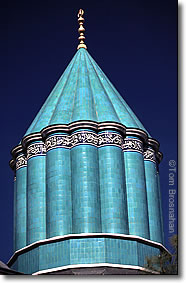 The green tiled dome above the cenotaph. |



